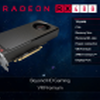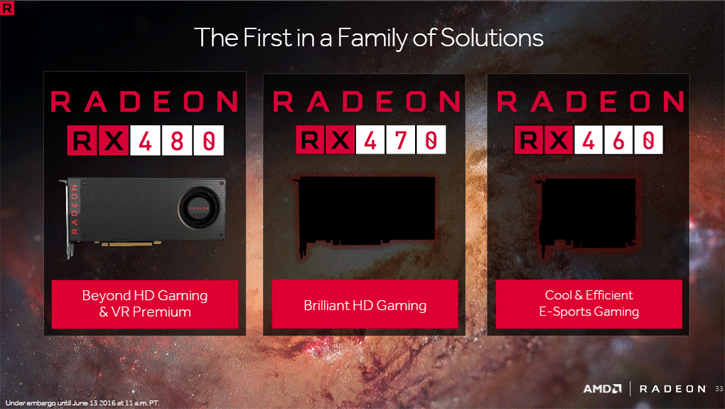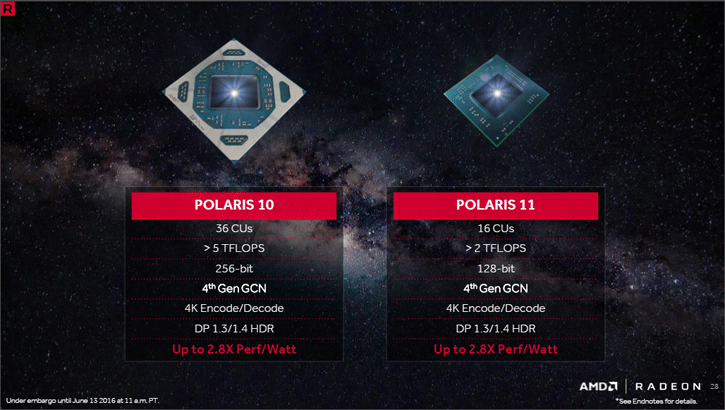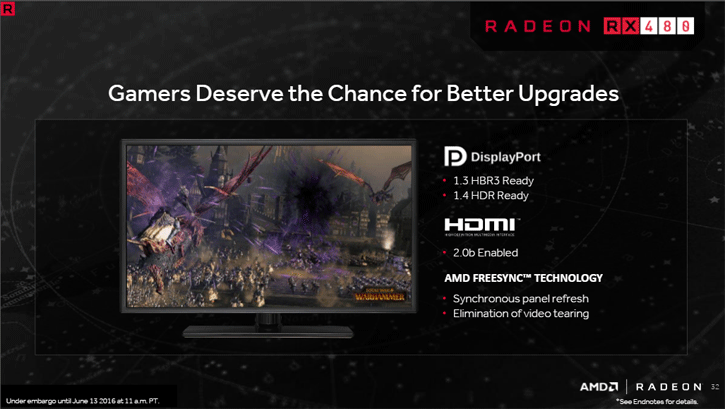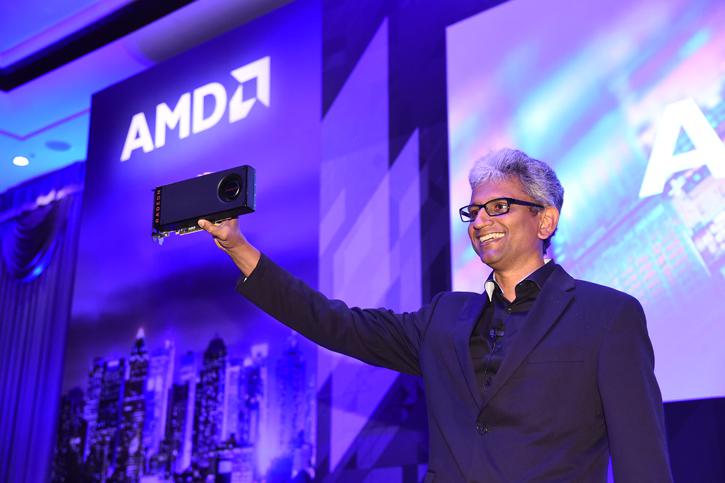So I just received a new slide-deck from AMD moments ago, in which they talk about the Radeon RX 460 - 470 and 480 in a PDF. The good news, It's cleared to post these, the bad news it not a lot more info; yet I did want to share some slides with you as some new stuff can be derived, extrapolated and thus confirmed from these slides
So the slide-deck basically is all about VR, but then all of the sudden mentions a nice sub-set of Polaris 10 and 11 details that I wanted to run you guys by. So Polaris 10 will end up being the GPU for the Radeon RX 480 and likely RX 470 which we all expected of course. The Polaris 11 GPU would be used for the Radeon RX 460, so far you guys are with me okay ?
Okay so first slide:
Right, in the slide above you can see the Radeon RX cards confirmed as announced yesterday. AMD has presented they will release three new graphics cards, two have been added to the product stack: the mainstream Radeon RX 470 and entry level Radeon RX 460. The two lower specced cards are obviously positioned below the previously announced RX 480. The video cards all do have a low energy consumption according to AMD, thanks to a die-shrink at 15/16nm FinFET. The RX 460 can even be powered from just the PCI Express slot. And with no need for a PCI Express power connector the card thus has a TDP of less than 75 watts. According to rumors the RX 470 is based on Polaris 10, which also is the basis of the RX 480 with its 150 Watt TDP. Probably, the GPU from the RX 470 has slightly lower clocks and some shaders clusters cut away. The RX 460 is built around the slower Polaris 11 GPU. No specifications were announced. However, now we go to the next slide:
Now that's the money shot I was keen showing you. Polaris 11 will be a more mainstream entry level GPU with the Polaris 10 to be a high-end SKU series. Polaris 10 is "Ellesmere" and Polaris 11 is "Baffin. Polaris 10 will be the R9 480 series. Polaris 11 will be the GPU replacing the 360 products, RX 460.
Radeon RX 480 and 470 (Polaris 10)
During AMDs Computex livestream some stuff was revealed, in specific the Radeon RX 480. A graphics card that will perform above 5 TFLOPS. With it's 150 TDP it'll have 36 CUs (as you can see above and thus now confirmed) x 64 shader processors per CU = 2304 Shader processors). The card will be available in both 4GB and 8GB versions and has 256-bit GDR5 memory at 256 GB/s (= 8 Gbps effective much like the GeForce GTX 1070). The card will run in the 1267 MHz range on it's boost clock. The card will start at 199 USD for the 4GB model. 8GB models will also become available. The product did not get a launch date.
I'll thrown in one more speculation from my side, the 2304 shader processors is an odd number. Math always is precise in fairly static orders of magnitude, I would be be surprised to see a Radeon RX 480 XT or whatever it's called, with 40 CU shader clusters and 2560 shader processors (but that remains pure speculation from my side).
What is expected is that the RX 470 will use the same Polaris 10 GPU yet cut-down in shaders in a 4GB model, so the biggest question marker remains the RX 470 specs wise. I now say this with certainy as Polaris 11 is a too weak processor for the 470 series.
Radeon RX 460 (Polaris 11)
Here's the newly confirmed bit, the Polaris 11 has surfacedm and is performing at 2 TFLOPS, comes with a 128-bit wide memory bus and has 16 CUs, and that's what we really needed to confirm a thing or two. As such Polaris 11 will have 16 CUs x 64 shaders = 1024 Shader processors. That's not a lot but fairly in line with predecessors and thus that is a fully enabled GPU. So let's hope they get good decent high base/turbo clocks. Polaris 11 thus definitely end up as the GPU for the Radeon RX 460 at 2 TFLOP/sec single precision performance.
Polaris introduces HVEC (h.265) decode and encode hardware-acceleration and will also support the latest display output standards like DisplayPort 1.3 (how does 3840x2160 @ 120Hz and 1920x1080 @ 480Hz sound?) and of course, HDMI 2.0. Now confirmed is DisplayPort 1.3 and 1.4 compatibility (for HDR). All cards will get hardware accelerated 4K en and decoders as the slide is listing. And there you have it, for now of course.
